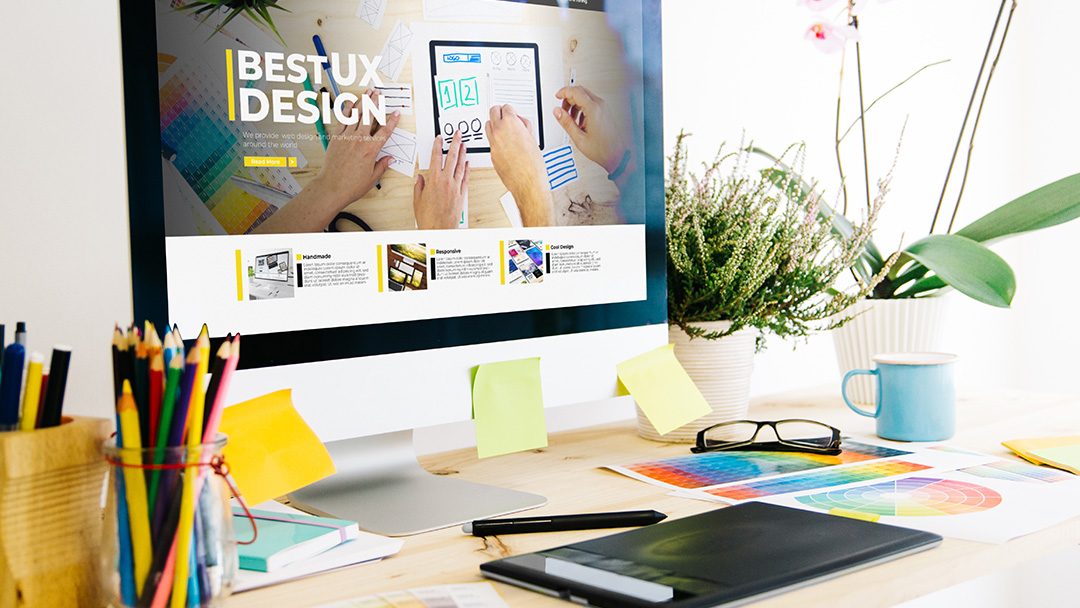
Our approach at Bluemodus has always been focused on marrying the worlds of User Experience and UI Development - providing memorable experiences in a smooth, agile, and scalable approach. While website design is often viewed as a subjective adventure, our iterative approach minimizes chaos and focuses on scalable design.
To ensure we’re always focused on our primary mission, to create a memorable and efficient user experience for both our clients and their users, our design approach focuses on a few key fundamentals:
1. Invest in a Thorough Business Discovery
An incredible user experience that delights starts with a deep and comprehensive understanding of the underlying goals of the business, its users, and the marketplace it exists in. During this stage in the approach, we look to create parity in the goals of our client and our understanding of those goals. For example, high-level design goals such as “a simple and clean design” are defined and brought into clarity during discovery, ensuring that every design project only begins once all parties are on the same page with some fundamentals:
- What are the goals of the business?
- What are the goals of users?
- What does a successful/failed design look like?
- Who are the primary stakeholders at each stage of the project?
- Who are the primary users?
2. Survey Primary Stakeholders
Once we understand the high-level goals of a design, we narrow down our discussions with primary stakeholders to further define the essence of the company’s brand identity and its current state, focusing on common areas like:
- Current user experience
- What is successful?
- What is most challenging?
- What is missing?
- Competitive landscape (direct and indirect)
- What sites are aspirational?
- How does the client’s brand weigh against its competitors? (Diffentiators, gaps, etc.)
- Identify a brand guide / aesthetic guidelines
- Determine the desired scale of change in experience/design of stakeholders
- How comfortable is everyone with change?
- What about the current site’s design is sacred? What is disposable?
Understanding the brand identity and what a client’s guardrails are in terms of risk allows our design team to feel confident in their scope. In addition, asking questions that are often viewed as uncomfortable at this stage avoids an even more uncomfortable moment later in the process.
3. Present a Creative Brief
Based on the above conversations, we compile our findings from our discovery and surveys and define a creative direction presented to primary stakeholders. The purpose of this brief is to ensure we only begin prototyping once we uncover if our solution aligns with the client’s goals.
In this stage in the process, we hope to uncover:
- Were there any surprises in our brief?
- Are there gaps in our understanding of the client’s:
- Goals?
- Their users?
- The project overall?
- Are there additional elements that should be included?
- Are there initial goals we should remove upon further review?
Most importantly of all, this stage should answer a particular question:
- Are we aligned creatively?
4. Concept Phase
Once we’ve clearly defined both goals and our alignment with them, we begin creating the concepts. While it can be jarring for some to begin creative this late in the process, efficiency comes from both arriving at the correct destination. In addition, spending our time building an intimate knowledge of a project creates the confidence for our team to provide quick, iterative, and accurate deliverables during the design process.
- Create and deliver design comps (mobile & desktop) aligned with approved strategic direction
- Identify and create components, patterns, and reusable layouts to build out a component-based design approach.
5. Review and Iterate
Once concepts are created, we review (iteratively) with primary stakeholders, focusing on primary elements, critical landing pages and components. Gathering feedback iteratively, we ensure we build our design and experience from the foundation up and avoid creating a disjointed user experience.
From there, we quickly move into UI Development, ensuring our clients are able to interact with designs across multiple devices and situations. This enables clients to look beyond a single comp and begin to visualize the full experience and journey.
To learn more about our UX and Design approach, download our Design Approach fact sheet.










